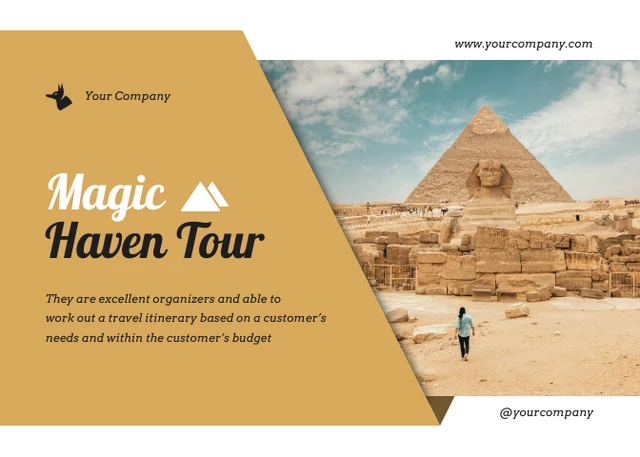
Flyers are single-sheet ads that allow you to reach a targeted audience at minimal cost. Flyer printing costs can be as low as $0.05 per flyer for large runs, making them a cost-effective advertising medium compared to others like billboards, which can cost around $1,500 per month.
And they’re incredibly effective. In fact, according to the Data Marketing Association, flyers are the most memorable form of advertising, with 89% of people saying they remember its message. Direct mail, including flyers, achieves a response rate of 5.3%, significantly higher than the 0.6% response rate for email.
As advertising executive Bill Bernbach once said, “Nobody counts the number of ads you run; they just remember the impression you make.”
That’s why flyers remain a staple for event promotions, product launches, and raising awareness for causes and fundraisers. In fact, 42% of businesses consider flyers critical to their marketing strategy.
But does flyer size matter? The short answer — yes.
In this post, I’ll teach you how to choose the right flyer size for your needs. (By the way, you can use our Flyer Maker or flyer templates to create a design fast).
Click to jump ahead:
- Standard flyer sizes explained
- How to choose the right flyer size for your needs
- Design considerations for different flyer sizes
- Conclusion
Standard flyer sizes explained
Flyers come in various shapes and sizes to accommodate different goals and budgets. For example, a large flyer is great when you have a lot to share while a smaller flyer is best for quick announcements.
Here’s an overview of standard flyer sizes.
- Standard (A4)
- US Letter
- A5
- Half-page
- Postcard
- Rack card
Flyer size in inches
| Format | Cover Size (Inch) |
| Standard (A4) | 8.3″ x 11.7″ |
| US Letter | 8.5″ x 11″ |
| A5 Flyers | 8.3” x 5.8” |
| Half Page | 8.5″ x 5.5″ |
| Postcard | 4″ x 6″ |
| Rack Card | 3.5″ x 8.5″ |
| Large Format | 11” × 17” |
Flyer size in centimeters
| Format | Cover Size (cm) |
| Standard (A4) | 21 x 29.7 |
| US Letter | 21.6 x 27.9 |
| A5 Flyers | 14.8 x 21 |
| Half Page | 21.6 x 14 |
| Postcard | 10.5 x 14.8 |
| Rack Card | 8.9 x 21.6 |
| Large Format | 27.9 × 43.2 |
Flyer size in millimeter
| Format | Cover Size (mm) |
| Standard (A4) | 210 x 297 |
| US Letter | 216 x 279 |
| A5 Flyers | 148 x 210 |
| Half Page | 216 x 140 |
| Postcard | 105 x 148 |
| Rack Card | 89 x 216 |
| Large Format | 279.4 × 431.8 |
Flyer size in pixel
| Format | Cover Size (pixels) |
| Standard (A4) | 595 x 842 |
| US Letter | 816 x 1054 |
| A5 Flyers | 559 x 793 |
| Half Page | 816 x 529 |
| Postcard | 396 x 559 |
| Rack Card | 336 x 816 |
| Large Format | 1056 × 1632 |
A4 (8.3″ x 11.7″ or 210mm x 297mm)
A4 flyers are great when you need to incorporate charts, graphs, or infographics to explain a product or service. These flyers are handy in business presentations, brochures (when folded neatly), and white papers.
For example, this flyer is uses text and visuals to explore animal behavior. It’d be a great fit in classrooms or the office lunch room to lighten up the mood.
US Letter (8.5″ x 11″ or 216mm x 279mm)
A US letter flyer is similar to an A4, but slightly bigger. Like the name suggests, this size is used in North America to make flyers and inserts.
US letter size is a great option when you need extra space for text and visuals but still want to have a flyer that’s easy to distribute.
Besides their use as inserts in newspapers, magazines, or brochures US Letter size flyers are great for promoting an event, advertising a sale, or spreading the word about your business.
A5 (5.8″ x 8.3″ or 148mm x 210mm)
A5 flyers hit the sweet spot between portability and impact which makes them perfect when you need to announce promotions and/or new products.
Not only is their size ideal to capture attention at takeaway spots or events, they can transform into rack cards (when printed double-sided).
This bridal shower A5 flyer conveys essential information without taking up too much space.
Half-page (8.5″ x 5.5″ or 216mm x 140mm)
Half-page flyers are perfect for creating coupons, announcing offers, and creating event invites because they can fit into envelopes and be sent to a target audience or left at reception counters.
This half-page flyer is compact and can be placed in a bar where potential customers will see it.
Postcard (4″ x 6″ or 105mm x 148mm):
Postcard flyers are small enough to be displayed at checkout counters, information desks, or promotional stands in stores.
Besides marketing, postcard flyers can be used as invitations, announcements, or as souvenir items.
This postcard flyer can be used in direct mail campaigns, handed out at events, or left in public spaces for broad distribution.
Rack cards (3.5″ x 8.5″ or 89mm x 216mm):
Rack cards are generally added as inserts in brochures or displayed events or stores.
They’re used to promote a business, products, or events. Other unique use cases include their ability to share valuable information, share special offers, or be used as mini-menus for restaurants or cafes.
Understanding flyer measurements
So far, I’ve presented flyer measurements in two sizes: inches and millimeters.
This is because North America (US and Canada) typically use inches to define flyer size while Europe and other regions rely on millimeters (e.g., 210mm x 297mm).
How to choose the right flyer size for your needs
Choosing a flyer size depends on your needs. For example, if you’re looking for a design that fits into a mailbox, you’ll probably want to skip the A4 format and go for a half-page or A5 flyer.
Key factors to consider when choosing the right flyer size
Here’s what you need to consider when finalizing flyer size:
- Target audience
How will your audience consume the flyer (hand out, in mail, or on a rack)?
Other factors to consider about audience include age. For example, an older audience might benefit from larger flyers that feature bigger fonts.
- Content and design
How much information do you need to convey? If you need to communicate complex information, you’ll want to select a larger flyer size.
As Brian Clark, CEO of Rainmaker Digital, notes: “On average, 8 out of 10 people will read your headline copy, but only 2 out of 10 will read the rest.”
- Budget
Larger flyers are more expensive to print and mail. If you don’t have the budget, you’ll want to go with cost-effective alternatives like a half-page. Printing and mailing costs for flyers vary based on size and quantity.
For instance, in the UK, printing 5,000 A4 half-fold leaflets costs approximately £595, while 5,000 A3 half-fold leaflets cost around £1,150. In the US, printing costs range from $0.05 to $4.50 per brochure, depending on factors like quantity, paper stock, and size. Mailing costs can add approximately $0.60 to $1.20 per piece, depending on the ZIP code.
Design considerations for different flyer sizes
As advertising executive William Bernbach once said, “The most powerful element in advertising is the truth.” The same applies to flyers. Your design should present information clearly and honestly so the message comes through without distraction.
The way you design a flyer has a big impact on how well your message is received. Since there’s no one-size-fits-all approach, let’s look at some key design tips for each flyer format.
A4/US Letter
Since these flyers are large, make sure there is a clear information hierarchy to maximize readability.
To achieve this, use headings, subheadings, and bullet points to guide the reader’s eye and use white space to prevent information overload.
Here’s a great example of an A4 flyer that uses subheadings to separate information into different sections (there’s also ample white space between the text).
A5/Half-Page
Since space is limited on A5 and half-page flyers, get creative and make most of the real estate.
Make sure these flyers have a clear call-to-action and use bold fonts and contrasting colors if needed.
If you need more space to share message across, you can add a QR code that allows people to read more about your offer or service elsewhere.
This half page flyer uses two high-quality images to communicate a product and a positive outcome and emotion associated with its consumption,
Postcards
In postcards, your message needs to be concise and in large, easy-to-read fonts so the content is easy to understand. However, visuals are the highlight here, so choose eye-catching images or graphics to draw viewers in.
Here’s a postcard that caught my attention almost immediately.
Rack cards
Rack cards have a vertical display to fit racks, so make sure to design top to bottom.
Start with a captivating headline to spark interest or offer something enticing that compels viewers to pick up your rack card to learn more.
Since space is limited in these flyers, prioritize readability with contrasting colors and bold fonts that makes your message stand out from the competition.

Conclusion: Find the right flyer size for your needs on Venngage and achieve your objectives
The right flyer size can make or break your marketing campaign. Imagine a large flyer filled with tiny text and a single, blurry image. It wouldn’t be very effective, would it?
To maximize impact, you need to choose a flyer size based on your content, audience, and budget.
Ready to create a flyer that gets noticed? Check out our free flyer templates of various sizes and achieve your goals.













































